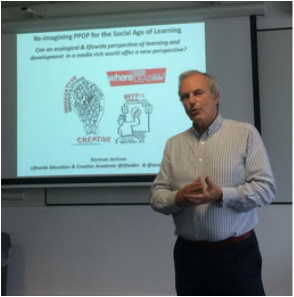
On the long (5 hour journey back) I reflected on the experience. Travelling makes you do this doesn't it? I re-read a blog post I had downloaded by Carlo Miceli who summarised the key points in Stephen Johnson's book and it seemed to me that the workshop satisfied two of his ten statements about where good ideas come from.
First innovation pattern: The Adjacent Possible
The first pattern he recognises is that ideas are connected like doors. Open a door and you can see new ideas, but only ideas that are connected can be seen. It’s by learning from other people’s ideas, or previous ideas of our own, that we come up with new ways of seeing the world. It’s a constant connection of innovation. The key is not to isolate your idea. Instead, try to connect it to as many doors -people, places, ideas – as possible. I think the 'design thinking' workshop provided an excellent space in which individuals could open the doors behind which their ideas sat and expose them to new possibilities.
Second innovation pattern: Liquid Networks
Ideas are not single elements. They are more like networks. They are not sparked by the connections between different elements: they ARE those connections. For ideas to happen, you have to place the elements at your disposal in environments where more connections can occur in the right way. The best networks have two characteristics: they make it possible for its elements to make as many connections as possible, and they provide a random environment that encourages constant “collisions” between all of its elements. The elements are worthless if they are not properly connected. The magic in the workshop is the way in which people who had participated in and shared a process were then connected in the act of designing their solution to the problem/opportunity. This was when ideas collided and new and better ideas emerged.
The following day I sat down and tried to catch some of my learning from the event. I was particularly interested in the high level concepts and how the rationale might be developed to support these. As I wrote I realised that I was embodying the first of Johnson's innovation patterns. During the process I had opened my door to share my ideas and then been rewarded with the open doors of participants through which they had shared their ideas. My writing process was the way in which I tried to select and make sense of the multitude of ideas. I tried to identify the big ideas and connect them to existing subsidiary ideas that gave the big idea substance and deeper meaning and ultimately might enable new social practices to be created. Finally, one other thing I now have which I didn't have before is a personally meaningful story I can use in my work in encouraging creativity to flourish in universities. Such stories are valuable ways of bridging the gap between the abstract ideas of Stephen Johnson to the real world of academics, educational developers and managers.
So this is how I witnessed the birth of some GOOD IDEAS. It was a deeply purposeful, social, collaborative, energetic and constructive and connected process and I feel privileged to have been a participant. But the good ideas are only that. They need to be developed and grown into something that can be brought into practical existence. This is the challenge for the developer - to seize the good idea and be inspired by it. To care enough about it to want to do something useful and practical with it. To accept the risk and discomfort of persuading and battling colleagues to convince them that this idea is worth investing time, effort and resources to bring it into existence. But that is an all together different story which I have yet to witness called, 'where good social practices come from'.
Sources
http://www.carlosmiceli.com/where-good-ideas-come-from/#sthash.Baif9dvQ.dpuf
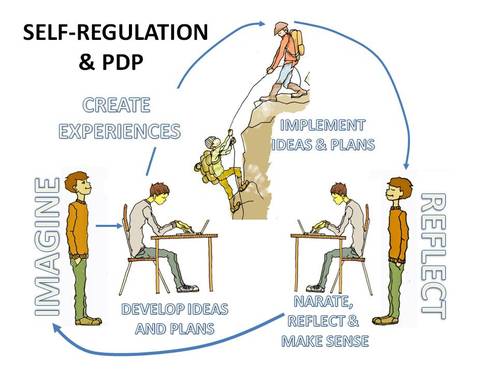
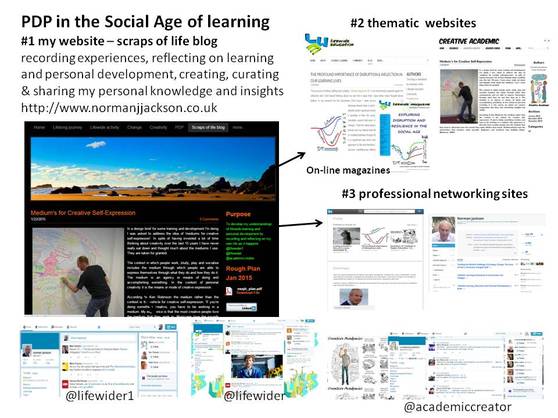
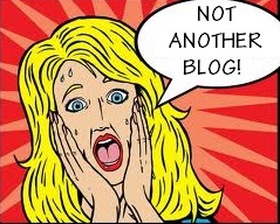
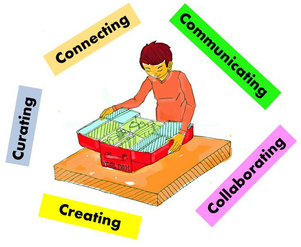
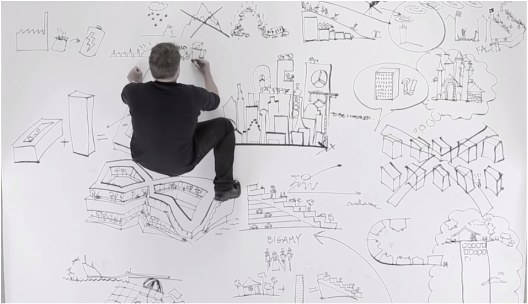
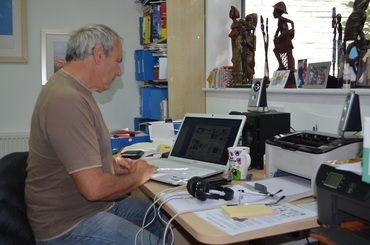
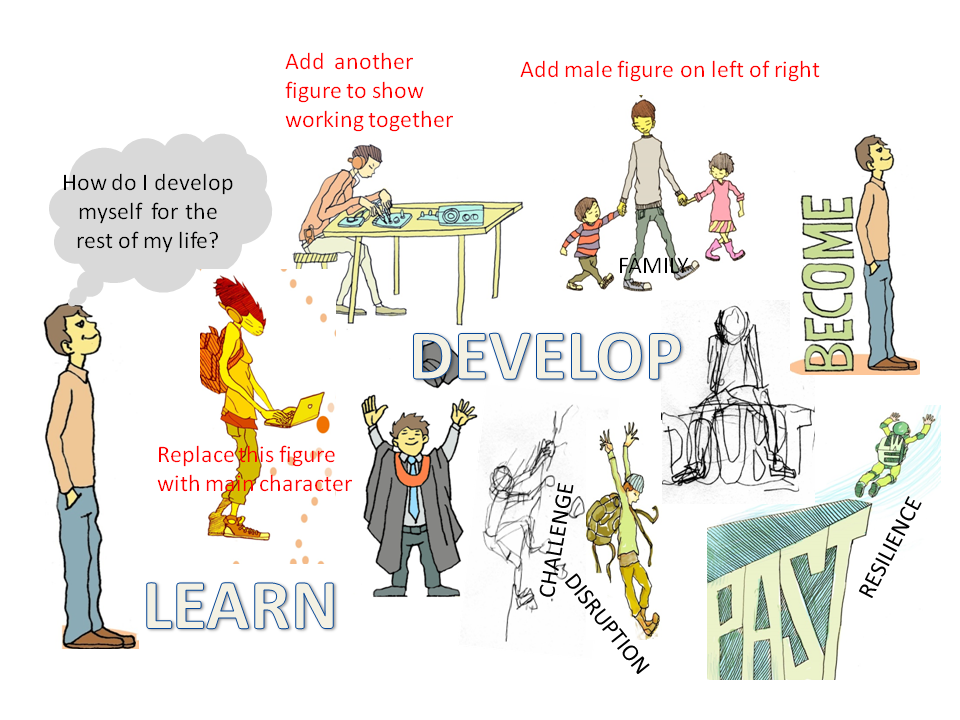
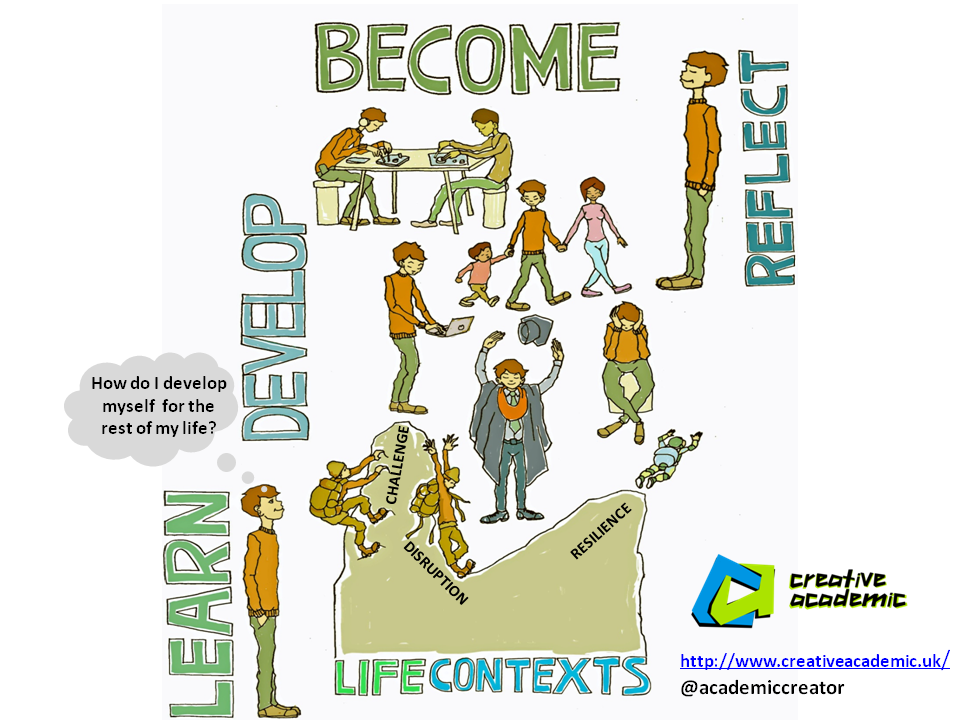
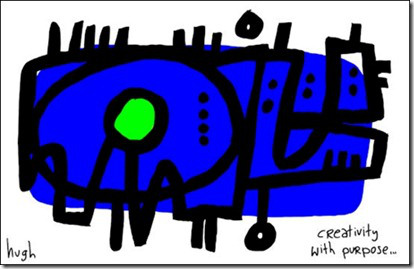
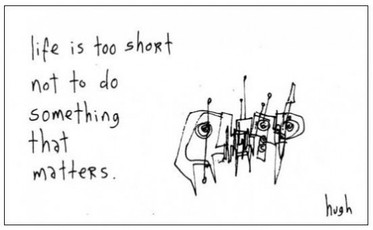
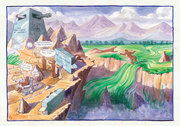



 RSS Feed
RSS Feed